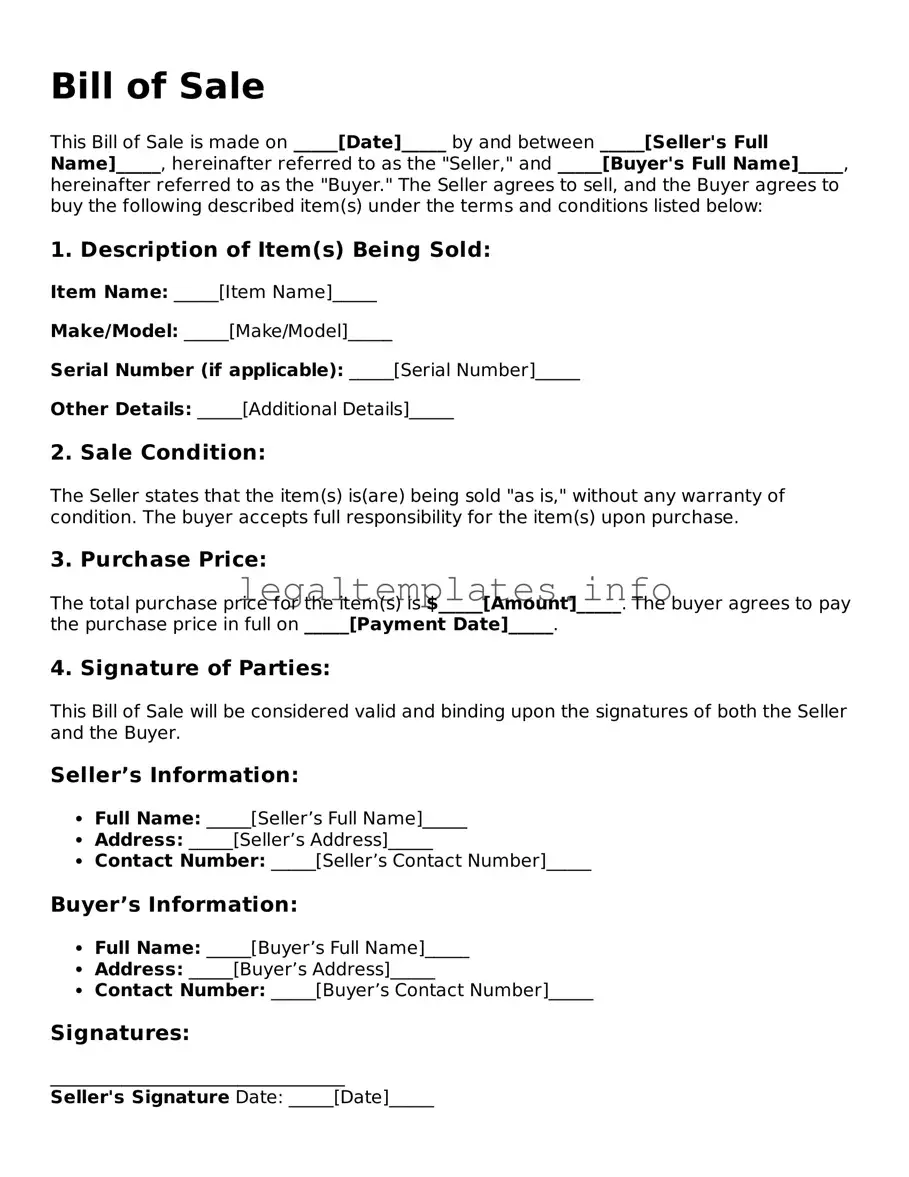What is a Bill of Sale form?
A Bill of Sale form is a legal document that records the transfer of ownership of an asset from a seller to a buyer. It acts as evidence of the transaction and includes details such as the names of the seller and buyer, a description of the item sold, the sale price, and the date of the sale.
When should I use a Bill of Sale form?
This form should be used whenever personal property is sold and ownership is transferred from one party to another. It is commonly used for the sale of vehicles, boats, motorcycles, equipment, and other valuable possessions. It provides legal protection for both the seller and the buyer.
Is a Bill of Sale legally required?
In many cases, a Bill of Sale is not legally required to complete a sale transaction, but it is highly recommended as it provides a written record of the sale. However, for certain transactions, such as selling a vehicle, some states require a Bill of Sale for the change of ownership and registration processes.
What information should be included in a Bill of Sale?
The form should include the full names and addresses of both the seller and the buyer, a detailed description of the item being sold (including make, model, year, and serial number, if applicable), the sale price, the date of sale, and any warranties or guarantees. It should also have signatures from both parties.
Do both the seller and the buyer need to sign the Bill of Sale?
Yes, for the document to be considered valid and legally binding, both the seller and the buyer must sign it. This confirms the agreement and consent to the terms of the sale by both parties.
Does a Bill of Sale need to be notarized?
While not always necessary, getting a Bill of Sale notarized can add an extra layer of legal protection and authenticity to the document. Some states do require notarization for the sale of certain items, so it’s important to check the specific requirements in your state.
Can a Bill of Sale be used for selling any type of property?
Yes, a Bill of Sale can be used for selling any type of personal property. However, when it comes to real estate transactions, other specific forms are legally required. The Bill of Sale is most suitable for tangible personal property such as vehicles, boats, furniture, and equipment.
What do I do after completing a Bill of Sale?
After completing a Bill of Sale, both the buyer and the seller should keep a copy for their records. If the sale involves a vehicle or boat, the buyer may need to present the Bill of Sale to the department of motor vehicles (DMV) or equivalent authority in their state to register the item in their name.
